Torque of a Bullet Into a Door | Physics with Professor Matt Anderson | M12-09
TLDRIn this physics lecture, Professor Anderson addresses a problem involving a bullet hitting a door and causing it to swing open. The focus is on calculating the final angular speed (omega final) of the door after the bullet is lodged in it. The scenario is set with given parameters: the bullet's mass (10 grams or 0.01 kg), its speed (400 m/s), the door's mass (13 kg), and the door's width (1.1 m). The principle of conservation of angular momentum is applied to solve the problem, considering the initial and final states of the system. The moment of inertia for both the door and the bullet is discussed, with the door modeled as a slab rotating about its hinge. The final calculation results in an angular speed of 0.84 radians per second for the door, a reasonable figure that aligns with the given variables and physical expectations. The lecture emphasizes the importance of keeping variables throughout the calculation and checking the answer for logical consistency.
Takeaways
- 🎯 The problem involves calculating the final angular speed (omega final) of a door after a bullet is fired into it and lodges, causing the door to swing open.
- 🔍 The scenario provided includes specific values for the mass of the bullet (m = 0.01 kg), the speed of the bullet (v = 400 m/s), the mass of the door (M = 13 kg), and the width of the door (a = 1.1 m).
- ⚖️ Kinetic energy is not conserved in this inelastic collision because energy is expended in deforming the wood as the bullet embeds itself in the door.
- 🌀 Angular momentum is conserved in the system, which is key to solving for the final angular speed of the door.
- 📐 Angular momentum (L) is calculated using the formula L = r x p or L = mvr sin(φ), where r is the radius, v is the speed, and φ is the angle between r and p.
- 🚪 The moment of inertia (I) of the door is given by I_door = (1/3)Ma^2, where M is the mass of the door and a is the width of the door.
- 🧲 The bullet, acting like a particle at the end of a string, has a moment of inertia of I_bullet = ma^2, where m is the mass of the bullet and a is the distance from the hinge to the point of impact.
- ➗ The final angular speed (ω_final) can be found using the conservation of angular momentum equation L_initial = L_final, where L_final = (I_door + I_bullet)ω_final.
- 🧮 By substituting the given values and simplifying, the final angular speed of the door is calculated to be ω_final = 0.84 rad/s.
- 📉 The final angular speed of the door is influenced by the speed of the bullet and the mass of the door, with greater speed and less mass resulting in faster rotation.
- 📏 The width of the door and the ratio of the bullet's mass to the door's mass also play a role in determining the final angular speed.
- 🤔 It's important to keep the variables in the equation until the end to check if the final answer makes sense in the context of the problem.
Q & A
What is the main physical principle discussed in Professor Anderson's lecture?
-The main physical principle discussed in the lecture is the conservation of angular momentum.
What scenario is used by Professor Anderson to explain the concept of angular momentum?
-Professor Anderson uses the scenario of a bullet being fired into a door, which then swings open with the bullet lodged in it, to explain angular momentum.
Is kinetic energy conserved when the bullet hits the door according to the lecture?
-No, kinetic energy is not conserved when the bullet hits the door. The collision is inelastic because energy is lost as the bullet pushes wood fibers out of the way to stick in the door.
How does Professor Anderson describe the calculation of angular momentum for the bullet and door system?
-He describes the calculation of angular momentum as the cross product of the radius and linear momentum (r cross p) or calculated directly using mass, velocity, radius, and the sine of the angle between them, which in this case is mvr sin(φ).
What are the initial conditions used in the calculation of the door's angular speed?
-The initial conditions include the bullet's mass (0.01 kg), speed (400 m/s), the door's mass (13 kg), and the door's width (1.1 meters).
How does the moment of inertia affect the angular speed of the door after the collision?
-The moment of inertia affects the angular speed by acting as the denominator in the equation ω_f = (mva) / ((1/3)Ma^2 + ma^2). A larger moment of inertia results in a slower angular speed because it represents a greater resistance to change in rotational motion.
Why is the angle between the radius and the momentum vector considered 90 degrees in this scenario?
-The angle is considered 90 degrees because the bullet's trajectory is perpendicular to the radius vector extending from the hinge to the point where the bullet strikes the door.
What does the result ω_f = 0.84 radians per second signify in the context of the problem?
-The result signifies the angular speed of the door after the bullet sticks into it, indicating how fast the door swings open in radians per second.
How does increasing the bullet's speed affect the door's angular speed?
-Increasing the bullet's speed would increase the door's angular speed because the bullet's speed (v) is in the numerator of the equation for angular speed, implying a direct proportionality between the two.
What did Professor Anderson suggest about checking the reasonableness of an answer?
-He suggested examining the relationships and dependencies of the variables in the final answer to ensure they make sense intuitively, such as the effect of the door's mass or the bullet's speed on the outcome.
Outlines
🎯 Introduction to Physics Problem: Bullet and Door
Professor Anderson introduces a physics problem involving a bullet fired into a door, which subsequently swings open with the bullet lodged inside. He presents a scenario with a door hinged on one side and a bullet impacting it, causing the door to rotate. The objective is to determine the angular speed, denoted as omega final, of the door's rotation after the bullet lodges. He sets up the problem with specific parameters: the bullet's mass, speed, the door's mass, and width. He hints at employing the principle of conservation of angular momentum to solve this and engages with a student named Andy to explore whether kinetic energy or angular momentum is conserved in this inelastic collision.
🔍 Analyzing Angular Momentum in a Physics Scenario
The explanation progresses to detailed analysis using angular momentum concepts. Professor Anderson explains that even though the bullet has linear momentum, it also possesses angular momentum because of its movement relative to the door's hinge. He defines angular momentum using the cross product of radius and momentum and elaborates that initially, the bullet's angular momentum can be calculated as mvr sine phi. As the door and bullet begin to rotate together post-impact, the system's total angular momentum must equal the initial angular momentum. This involves calculating the moments of inertia for the door and bullet. By setting these values into an equation, he demonstrates how to solve for the final angular speed of the door, ending with a specific numerical result for omega final.
✅ Validating Physics Equations Through Practical Insights
Professor Anderson concludes by validating the equation's practical implications. He explains that the final angular speed of the door increases with the bullet's speed and decreases as the door's mass increases, which intuitively makes sense because of the respective placements of these variables in the equation. He reassures students about the accuracy of the result by encouraging them to understand the relationship between different physical quantities involved. The discussion closes with him acknowledging that while complete understanding isn't mandatory, a good grasp of the basics is crucial, suggesting students should be at least 75% comfortable with the concept.
Mindmap
Keywords
💡Angular momentum
💡Conservation of angular momentum
💡Inelastic collision
💡Kinetic energy
💡Moment of inertia
💡Omega final
💡R cross P
💡Sine phi
💡Mass (m and M)
💡Velocity (v)
Highlights
The lecture begins with a physics problem involving a bullet hitting a door, causing it to swing open.
The problem aims to calculate the final angular speed (omega final) of the door after the bullet is lodged in it.
The given parameters include the mass of the bullet (m), the speed of the bullet (v), the mass of the door (M), and the width of the door (a).
The specific values provided are a bullet mass of 10 grams, a bullet speed of 400 meters per second, a door mass of 13 kilograms, and a door width of 1.1 meters.
The principle of conservation of angular momentum is identified as the key to solving the problem.
It is clarified that kinetic energy is not conserved in this scenario due to the inelastic nature of the collision.
The initial angular momentum of the system is calculated based on the bullet's mass, velocity, and the door's width.
The final angular momentum involves the rotating door and the lodged bullet, with their respective moments of inertia.
The moment of inertia for the door is given as a function of the door's mass and width.
The moment of inertia for the bullet is considered as that of a particle at the end of a string, which is m * a^2.
The equation for final angular momentum is set equal to the initial to apply the conservation of angular momentum.
The final expression for omega final is derived, incorporating the moments of inertia of the door and the bullet.
By plugging in the given values, the final angular speed of the door is calculated to be 0.84 radians per second.
The lecture emphasizes the importance of understanding the physics concepts and checking if the answer makes sense in the context of the problem.
The impact of different variables such as the bullet's speed, the door's mass, and the door's width on the final angular speed is discussed.
The lecture concludes by encouraging students to be comfortable with their understanding of the problem, aiming for at least a 75% grasp.
Transcripts
Browse More Related Video
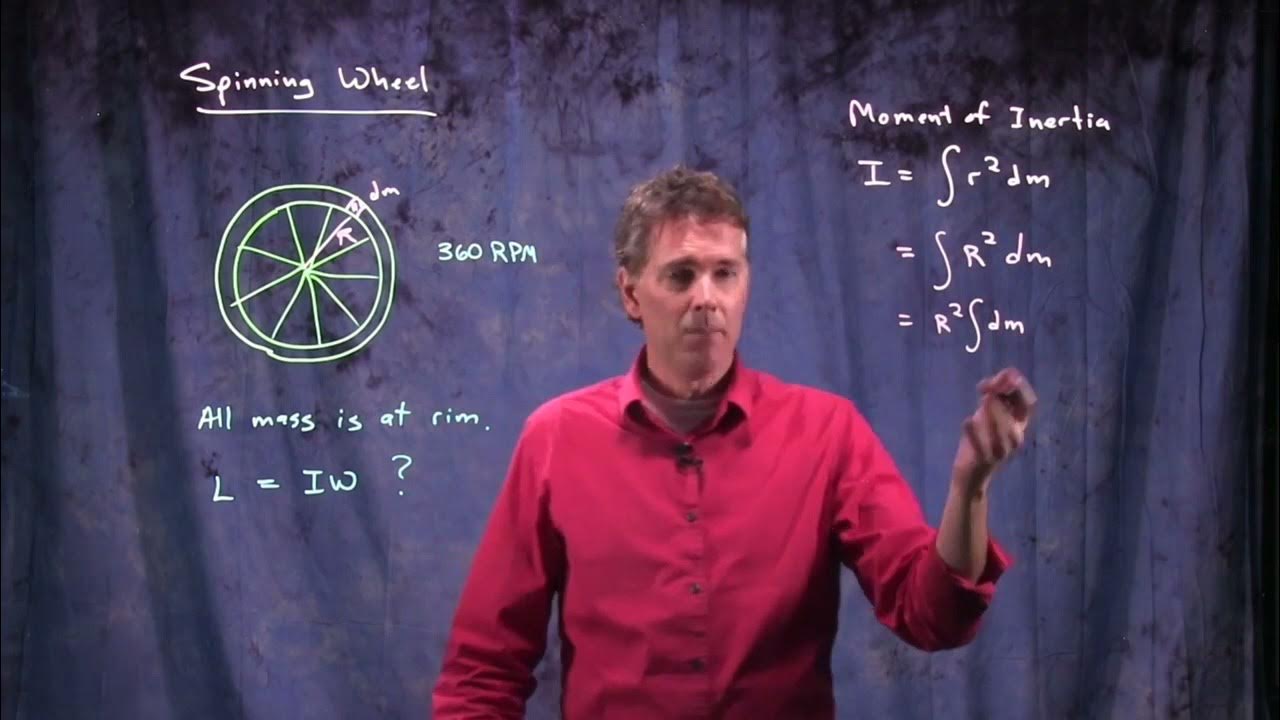
Angular Momentum of a Spinning Wheel | Physics with Professor Matt Anderson | M12-16

Physics 15 Torque Fundamentals (13 of 13) Torque and Angular Acceleration
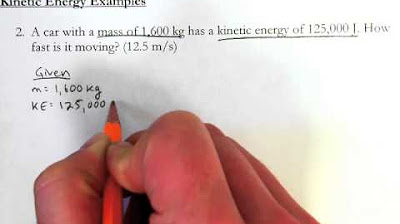
Kinetic Energy - Introductory Example Problems
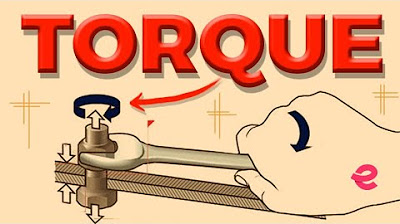
What is Torque? | Physics | Extraclass.com
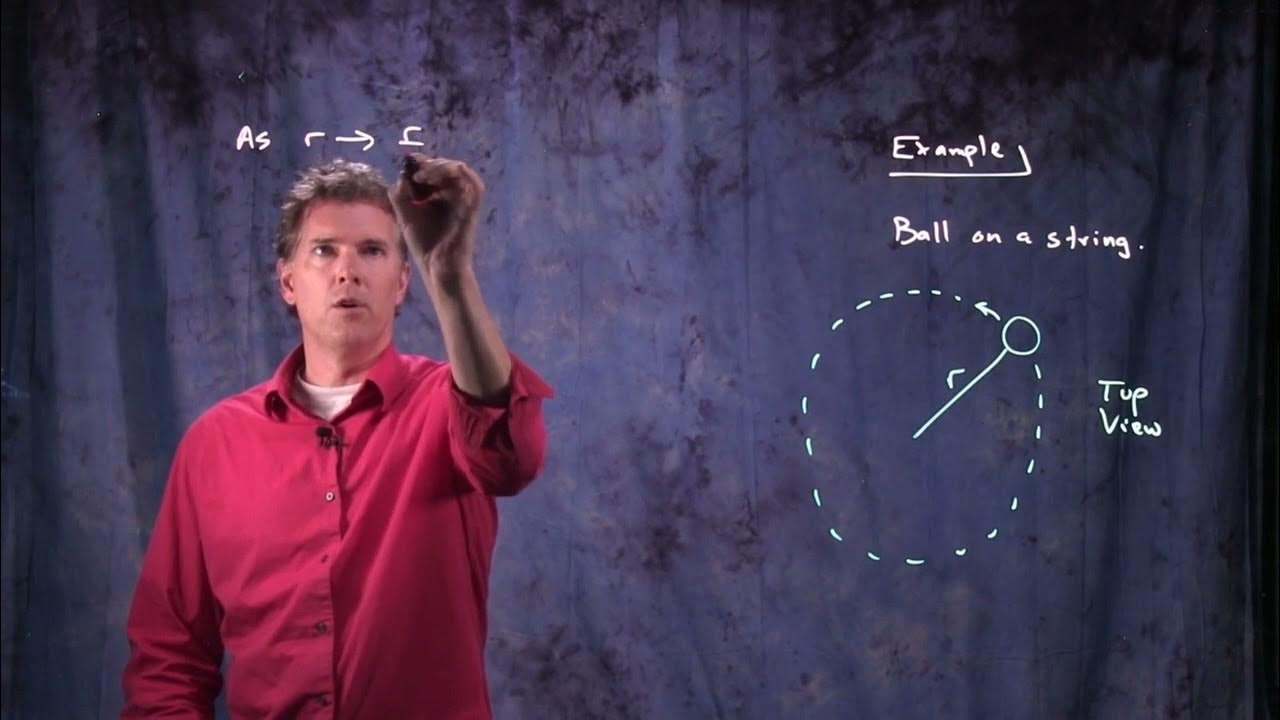
Conservation of Angular Momentum | Physics with Professor Matt Anderson | M12-18
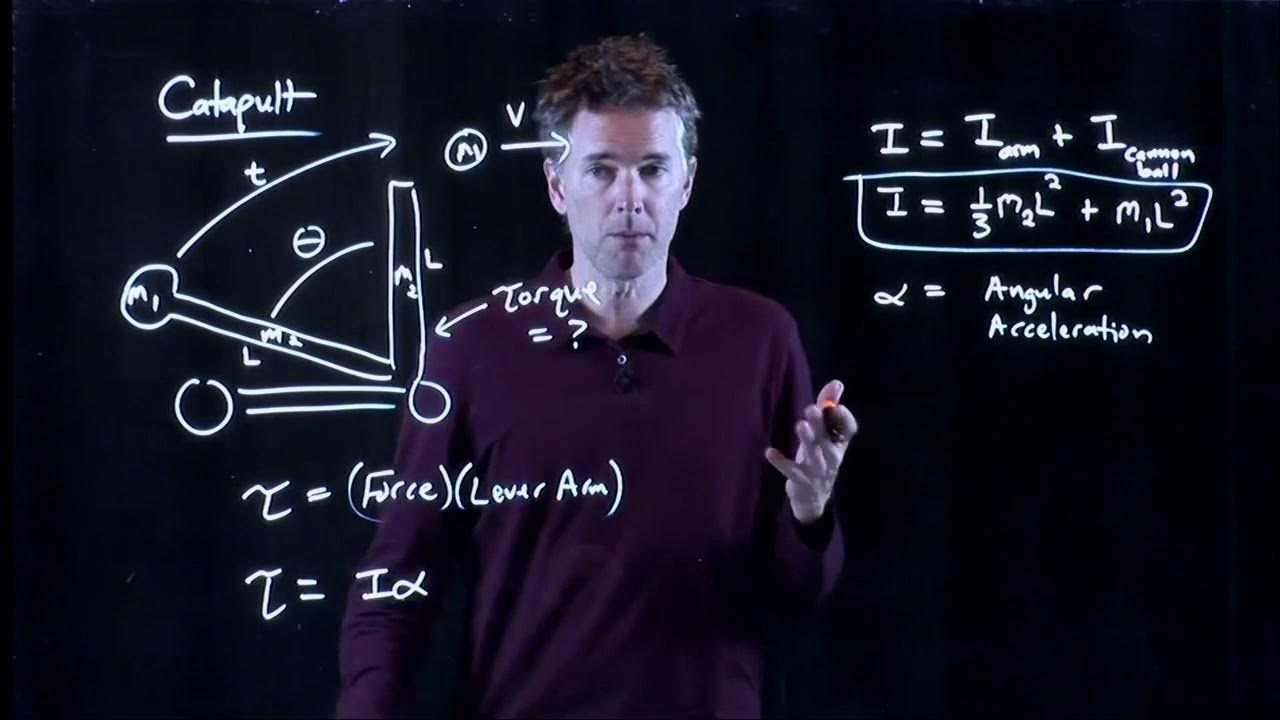
Torque and the Catapult | Physics with Professor Matt Anderson | M12-07
5.0 / 5 (0 votes)
Thanks for rating: